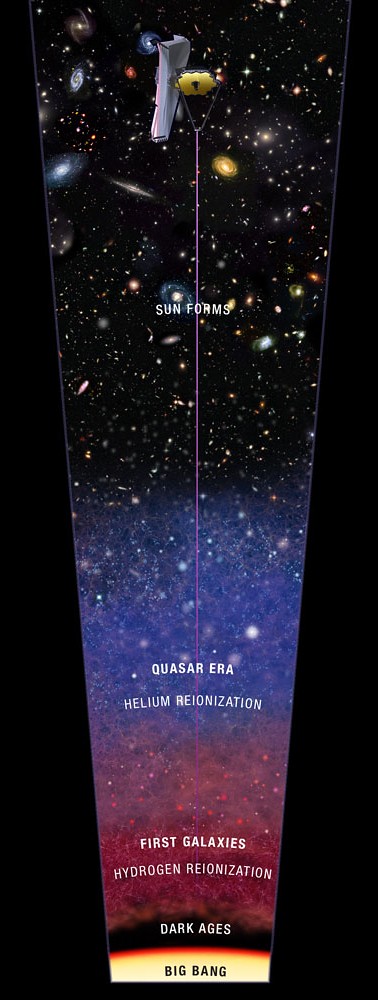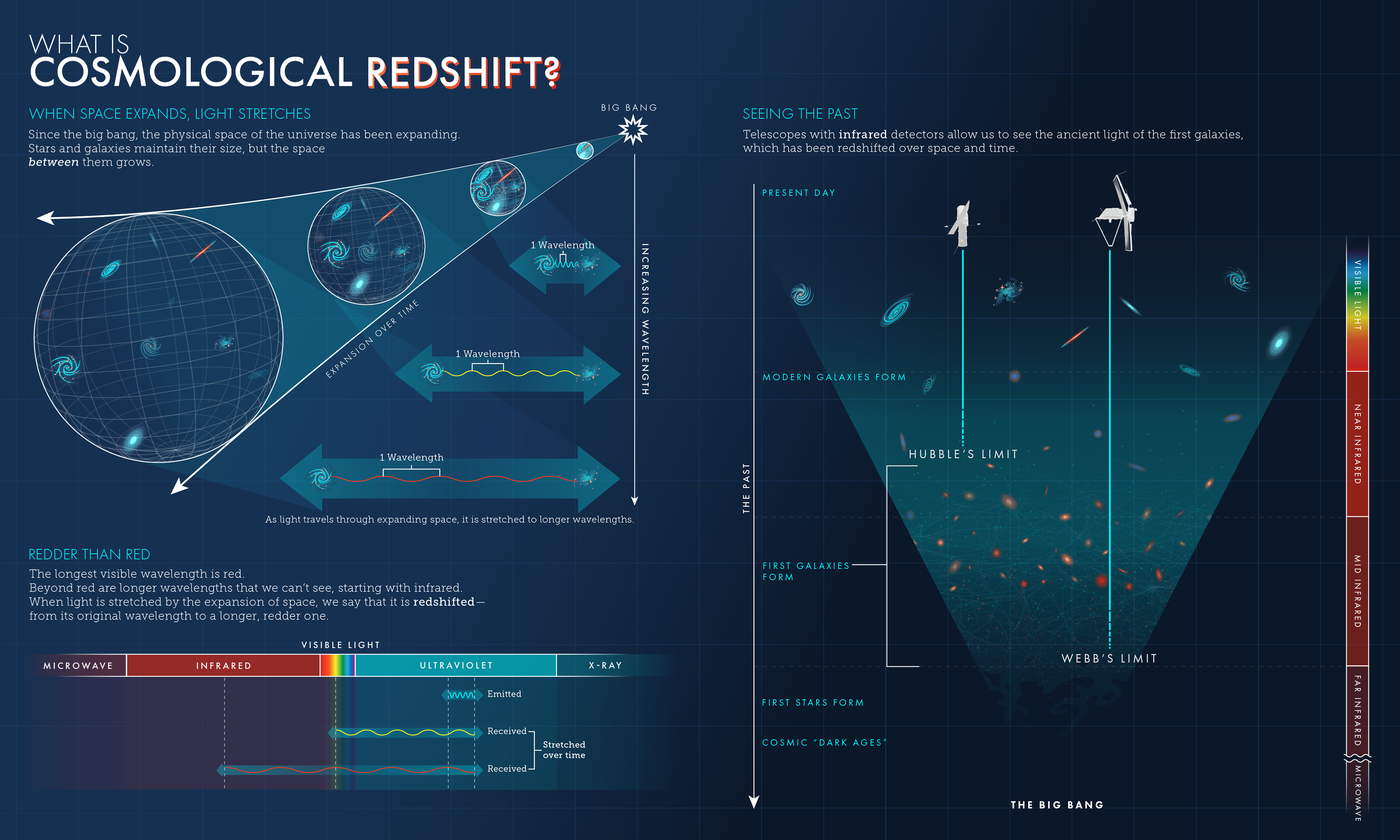During the first two weeks of early releases from the James Webb Space Telescope (JWST), four papers broke the records of the oldest galaxies detected. Until then, the oldest galaxy known was discovered by the Hubble Space Telescope (a galaxy called GN-z11 which we believe existed 13.4 billion years ago) — but the JWST found a galaxy that stretched back to 13.8 billion years ago, just 300 million years after the Big Bang.
In addition to being just an impressive picture, this discovery could change the very way we think about the universe.

When we look at objects that are far away, we aren’t just looking across large distances — we’re looking back in time. When something is, say, 1 light year away from us, it took light one year to reach us, so we’re seeing the object as it was one year ago. If we’re looking at something that’s one million light years away, we’re seeing it as it was one million years ago; and if we’re looking at something billions of light years away, well, you get it by now.
Such objects do exist, and while we can’t look at things as far back as the Big Bang itself, we can get surprisingly close to it.
Astronomers are interested in the oldest and farthest galaxies because they offer clues as to what the early stages of the universe were like. These galaxies were formed after something called the Epoch of Reionization – a period that researchers suspect took place between 150 million and 1 billion years after the Big Bang – and they could confirm (or disprove) our theories of how the universe evolved. Until now, we didn’t really have the technology suitable for this — but this is where the JWST comes in.
The Epoch of Reionization
Reionization is one of the two major phase transitions of gas in the universe — basically, it’s a period in which the universe changed in key ways. Its name comes from “ions,” atoms that have an electrical charge, so the atom has more protons than electrons or vice versa.
After the Big Bang, a soup of ionized material (protons and electrons) combined and formed hydrogen atoms (helium was also present, but let’s just focus on hydrogen to keep things simple). The universe also expanded and cooled down a bit, creating temperatures where atoms could exist. These atoms were neutral electrically (not ionized), and for the most part, the universe itself was neutral.
This period is called recombination, and before this recombination, no visible light could flow through the universe. So basically, we can’t see anything from earlier than this period, because the universe hadn’t yet become transparent. But not long after that, something (presumably, ultraviolet radiation) ionized the neutral atoms from recombination.
We may not be able to see anything from before the recombination, but the oldest galaxies we can observe must come from the time when the universe reionized atoms — the Epoch of Reionization (EoR).

So the farthest and oldest things we can see come from EoR, but how exactly do you observe the oldest visible things in space? Well, one approach is to look for CMB photons that were perturbed by the ionization that took place when the first galaxies were formed.
Another way is to look for older galaxies which are also farther galaxies — and that’s what the JWST is doing.
First galaxies
The EoR had another consequence: it made stars possible. The first stars came before the first galaxies: the so-called Population III type stars — massive, hot stars that contain nothing but hydrogen and helium. For comparison, our Sun is a Population I star with 1.3% of its elements being heavier than hydrogen and helium.

Those ancient stars died at some point, they went supernova, leaving the intergalactic medium chemically rich with heavier elements that formed the first galaxies.
JWST detected galaxies that are not just very old, but also surprisingly massive. Astrophysicists believe that these early-type galaxies wouldn’t have had enough time to become massive, but the data from the JWST says otherwise. This already suggests that our current models may not be as good as we hoped — and the JWST is just getting started.
There’s also something else

For now, the JWST’s instruments observe the galaxies using a technique called photometry, which relies on specific filters that only allow light of some wavelengths to pass through. Scientists can estimate the photometric redshift of galaxies by knowing the brightness of the object whose reflected or emitted light passes through a filter.
The problem is that photometry can only give an estimation of the redshift. It is not a precise technique unless the filters are extremely narrow — so there’s still a chance that JWST’s observations are imprecise for now.
The best redshift measurement comes from spectroscopy, which is a more precise but also more time-consuming way to determine the redshift. The JWST has spectroscopic instruments which will confirm or refute the discoveries made so far, and whether those will confirm the initial estimates (which means our current models are wrong) or disprove them (which means our models still have a chance) remains to be seen.
At any rate, the telescope and its findings are already producing exciting news for astronomers, astrophysicists, and cosmologists. More observations like these will continue coming in due to JWST’s powerful instruments.









